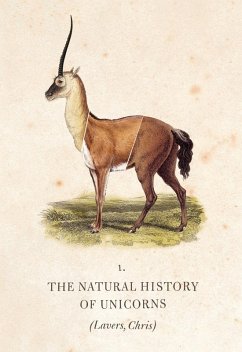Washington Post Book World
From Biblical stories about virgins to adventures with Harry Potter, unicorns have enchanted people for millennia. In the endlessly fascinating The Natural History of Unicorns, author Chris Lavers ingeniously traces the legend of this mysterious creature to the real people, places, and animals that have influenced its story.
Dieser Download kann aus rechtlichen Gründen nur mit Rechnungsadresse in A, B, BG, CZ, D, DK, EW, E, FIN, F, GR, HR, H, I, LT, L, LR, NL, PL, P, R, S, SLO, SK ausgeliefert werden.









